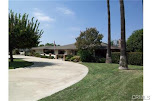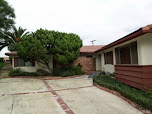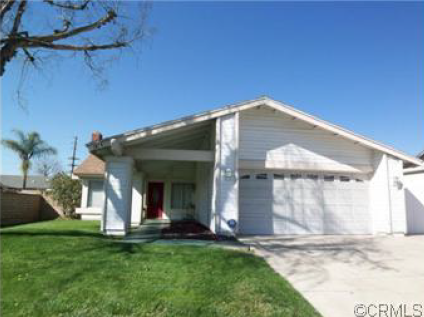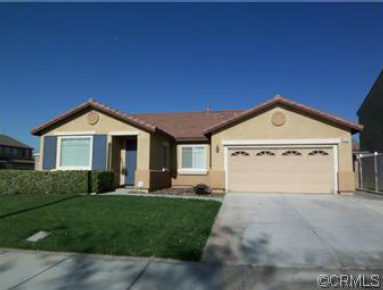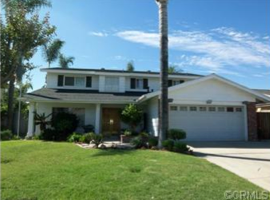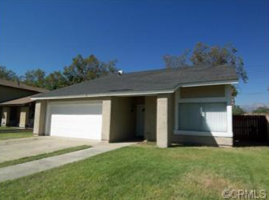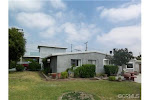Tuesday, December 18, 2012
MEDIAN PRICE -- UP...INVENTORY -- WAY DOWN... SALES VOLUME -- UP
What a month it has been! It's been chaos if you're a buyer trying to find a property,
and a little déjà vu if you are a seller that is getting multiple offers on
your property that's for sale. That
being said, however, we are not seeing the double digit appreciation that was
present in 2005 and 2006. That is
a good thing, as that was the start of the bubble that burst and caused the
subsequent crash and the very slow recovery we are now enjoying. September numbers brought some
interesting news for Southern Californians. (More specific numbers to follow.) The median price was up 5.9% versus September a year
ago. There were 23,977 sales and
that was up 16.2% from the previous year.
October numbers that are found in the next section, were even
better. But a really interesting
fact from the last month of the third quarter was that local zip codes showed improvement
in 53 of 83 for the county. That
shows that there isn't a concentration of business or growth in just hard hit
areas such as Santa Ana, or south Orange County, where investors are flipping
properties. In fact, sales for
October, the last complete month available, show that move up buyers, that
elusive quadrant, has finally reemerged and these buyers are entering the
market. Obviously we need more to
do so, because of inventory limitations, but it has started. The upper end of properties over 2
million is moving more robustly than it has since 2006. Finally, a last bit of good news is
that home construction is finally on the rise, seemingly for good, not just a
sputter of one or two developments, but begun in earnest by multiple
builders. In fact, 1,700
construction jobs were added as compared to September 2011, according to the
Employment Development Department. This is good news, because without that
vital addition of new homes, we would really see an inventory bog down in the
next 2 years.
Labels:
Chino Real Estate,
Jeanette Young,
Sherry Young
WHAT WERE THE ACTUAL NUMBERS?
According to
DataQuick, southern California home sales rose sharply in October as the
previously discussed move-up buyers joined investors, shifting the mix of homes
selling from the first time buyer, or investor looking for rental
scenario. Foreclosures hit a 5
year low, as short sales continued to move front and center as the primary
distressed listing. Make a note,
however, that standard, or equity sales, are making a comeback as
non-distressed owners may enter the market in an effort to sell and move up, or
exit Orange County to become a retiree and move elsewhere. The October total was 21,075 homes sold
in Los Angeles, Orange, San Bernardino, Riverside, San Diego, and Ventura
counties. That was up a whopping
18% from the 17,859 sold in September.
The median price for the Southland was $315,000 in September and
October, and that was up 16.7% from the $270,000 of September 2011. Short sales made up an estimated 26% of
the resale market in the Southland for October. The total number of sales for Orange County was 3,148, which
was up 40% from the same period a year ago. The total number of resale houses was 2,066 and condominiums
had 882 sales. New homes came in at 200. The median price for all homes was $455,000 and for
single-family it was $511,000. The
median price for condos was an even 300. Interestingly, buyers paying with all
cash hit a near record 32.1% for southern California. A final number which is somewhat sobering... 57% of all
homes for sale, had multiple offers.
Labels:
Chino Real Estate,
Jeanette Young,
Sherry Young
ORANGE COUNTY ECONOMY REBOUNDS IN FORECAST
So read the business section headline of the Orange
County Register on October 25th.
Specifically, it was talking about the Cal State Fullerton economic
forecast for next year. They expect
a continued rise in home prices, and lots of construction jobs in 2013. The next highest sector will be
professional and business services, followed by leisure and hospitality. What's really interesting is that
earnings of large companies have outpaced their own forecasts, yet no one
really seems to feel really good about it. More jobs were added in September than originally forecast
for the nation, and Orange County seems to be holding its own in this
parameter. Interest rates are at a
15 year low, home prices throughout California have risen for 8 straight
months, and the job sector is looking positive. Recovery? You
didn't hear it here, but could it be Orange County's dirty secret?
Labels:
Chino Real Estate,
Jeanette Young,
Sherry Young
INVENTORY SLIDES, GEN X AND Y, WANT TO BUY, AND THE SMALL INVESTOR
Los Angeles inventory is down 37.1% and Orange
County is about there too. The
city taking national honors for the biggest slide is our own San Diego with
40.7% (according to the national KCM Blog.) Generation X and Y, in a recent survey, were asked,
"what is a fundamental indicator of success?" A whopping 75% said it was owning a
nice home and only 12% said an extravagant vacation. Home ownership is in America's DNA. Should the small investor attempt to
buy a single-family property as a rental.
Only a discussion with your financial planner can tell you what's right
for you, but here are some thoughts... 1) Nationally, rental leasing volumes
were up every month for 2 years.
2) Supply of available rentals is down 11% in the same period. 3) Rent growth is expected to increase
at a very strong clip in 2013.
Labels:
Chino Real Estate,
Jeanette Young,
Sherry Young
Monday, August 27, 2012
WHAT WILL NEXT 5 YEARS BRING TO HOUSING PRICES?
Does this sound like a loaded question? There may be as many answers to that question as there are people in the USA, but it seemed like a good lead off question for this month's report. In fact, the opinion reflected in the following numbers are reported by "Pulsenomics", a group of 100 economists, investment strategists, and housing market analysts. After their conference they reported housing prices to start upward in 2013. Here is the 5 year projection: (A) 2012 - (-).4% (B) 2013 - (+)1.3 % (C) 2014 - (+)2.6% (D) 2015 - (+)3.2% (E) 2016 - (+)3.5%. The average pre-bubble (1987-1999) annual appreciation was 3.6%. How can Pulsenomics make such a prediction when the housing market still seems in such dire trouble? There are several factors to consider. Firstly, the plummet of "shadow inventory." It is at its lowest number since 2008. In fact, according to Mark Fleming, the chief economist for CoreLogic, "Since peaking at 2.1 million units in January of 2010, the shadow inventory has fallen by 28%. The decline in the shadow inventory is a positive development because it removes some of the downward pressure on house prices. This is one of the reasons why some markets that were formerly identified as deeply distressed, like Arizona, California and Nevada, are now experiencing price increases." Prices in southern California certainly have not skyrocketed, nor does any Realtor or economist wish them to do so. A lesson, hopefully, has been learned regarding ascending markets that rise on false theories or practices. However, there are slight bumps upward in certain areas only. Literally, a price may rise for a certain neighborhood, based on competing properties, or simply more buyers for that area than sellers. But you will note that overall, prices remain flat for 2012, even slightly down. Those are national numbers and obviously California is on different footing, particularly southern California, which has been projected to recover more quickly than northern California, and the rest of the country.
Labels:
Chino Real Estate,
Jeanette Young,
Sherry Young
IF INVENTORY IS SO LOW, WHY AREN'T PRICES RISING NOW?
This is a good question. Isn't housing economics simply the law of supply and demand? And if it is, with inventory so low, (and inventory is low, with the possibility that pending sales will rise above available homes for sale, a true market anomaly), why aren't prices rising more quickly right now? The answer to these questions may not be obvious, but there are some reasonable answers. First of all we are in a counter-intuitive market. So what would seem to be an obvious outcome is not, and in fact, the opposite occurs. In this case, prices are still going down, despite some listings that sell over list price, in some price ranges or neighborhoods. Remember that the list price was aggressively LOW, not HIGH, to begin with. And although historically low interest rates, (seriously 3-4%??), are driving the demand which is rapidly lowering available inventory, there is a key factor which is keeping a lid on housing prices--- WAGES. In fact, this column will report it first, that as long as wages stay flat, and they have been flat for the last 7 years, prices will be forced to keep a lid on it. Why? Simple. Housing affordability is part and parcel to a healthy housing market. We saw what happened in 2006 with double digit appreciation. That was appreciation that was so fast, there was no way wage increase percentiles could keep up. Housing appreciation went to 11% in southern California, and the industry created unsustainable financing, (a nicety for horrible loan programs), that propelled a booming market well past when it should have adjusted and created the terrible mess we have been in for the past 5 years. Some industry analysts believe we are in for 5 more years of pain, some believe, as in the previous article, that we are beginning to climb out now. Time will tell, but it does appear that the housing market has and is stabilizing.
Labels:
Chino Real Estate,
Jeanette Young,
Sherry Young
WHAT WERE THE ACTUAL NUMBERS?
The total number of May sales for Orange County, (the last full month available), was 3,124, not including trustee sales auctions, where investors paid cash at the courthouse steps for 169 properties. There were 1,542 equity sales, (non short), for single-family, and 506 equity sales for condos. The short sales numbered 371 for single-family and 238 for condos. Bank owned listings sold nearly all that was listed with 304 single-family and 163 for condos. There were 1,294 Notices of Default recorded, down nearly 35%, and 987 Notices of Trustee Sale, which has declined sharply from monthly highs of over 1,700 in 2011. The median price for all of Orange County for all homes was $435,000 which is up 2.4% for year over year for May (2011). The slight increase comes from rises in condos and new homes, not single-family which actually declined 1%. However, the big news is in the volume of homes sold which rose 23.1% in May 2012 compared with May 2011. It would seem we are headed in the right direction.
Labels:
Chino Real Estate,
Jeanette Young,
Sherry Young
CHAPMAN REPORT FORECASTS OC HOME PRICES TO JUMP 7.1% IN 2013
The median price in OC is expected to rise for 2012. But does 7.1% seem like "pie in the sky?" First of all, OC is predicted to lead California in recessionary recovery on almost all fronts, and California will likely beat most parts of the country. But look carefully at what the Chapman Report actually reports. They see a decline in the number of foreclosed homes and homes selling "short." We already discussed the fact that the shadow inventory is shrinking. The absence of those homes, that represent the low end of the market in pricing values, will allow equity properties to force prices up slightly for averages, but probably not a big jump in appreciation overall. Nonetheless, we are on track for a stronger housing market. They reported that homebuilding is projected to increase 27.3% this year and 15.1% in 2013, nearly triple what it's been. Finally, Chapman predicts a housing shortage over the next eight years as construction still lags behind population growth. As this column has reported in past months, the millennium generation believes in home ownership, is coming of age, and wishes to buy. Expect the housing market to be as resilient as the citizens who live here.
Labels:
Chino Real Estate,
Jeanette Young,
Sherry Young
Monday, June 25, 2012
WOW!! WHAT A DIFFERENCE A YEAR MAKES!
Don't believe it? Well, believe these 3 headlines from the last 3 weeks of the Orange County Register from April 22 through May 6 (in order of oldest to most recent): 1) FORCLOSURE SALES DOWN SHARPLY 2) IS THE FORECLOSURE CRISIS OVER? 3) HOMEBUYERS SPRINGING TO LIFE THIS SEASON. There has in fact been a huge shift in Southern California real estate in the last year. According to statistics gathered by Foreclosure Radar and other sources, California property owners are losing homes to foreclosure at half the pace of 2011. Part of the reason for the drop is that banks have finally figured out that short sales save them money. When a property short sells, it's better for everyone. The homeowner doesn't take such a big hit to his/her credit, they save a little dignity, and it will allow them to re-enter the housing market more quickly down the road. For banks, the advantage is significant; they generally don't have to rehab the property, they don't have to put utilities in their name and maintain the property while it's being held for sale and they don't have a nonperforming asset on their ledger. If you don't know what you're looking for when you study the numbers, you might miss it. The casual glance at the numbers appears drastic. The month of March saw 86,487 trustee sales scheduled. That seems like a drastic number. But 80% of them were postponed, many specifically to allow a short sale to proceed. So far this spring, Notices of Default are down 19.7%, foreclosures going back to the bank are down 62% and foreclosure sales to a third party are down 21%. So, is the foreclosure crisis over? There may be different interpretations of the data to come to that conclusion, but suffice it to say, foreclosures have definitely peaked. The final headline regarding homebuyers begs the question, who is buying all these distressed listings? The answer to that question is, well, everyone. As the number of foreclosures drop, investor purchases will rise, because the investors come to the market as close to the bottom as they can reasonably figure. The month of March, for example, Foreclosure Radar reported that 46% of all trustee sales were purchased by investors instead of them going back to the bank to become an REO. A year ago the significant number was 71%, and that was the number of homes NOT being purchased, but going back to the banks. Bank owned properties are down 20%, and only 44.7% of listed properties were distressed for March, which means over half the properties listed for sale were equity sellers.
Labels:
Chino Real Estate,
Jeanette Young,
Sherry Young
HOMEBUYERS SPRINGING TO LIFE?
It's true! Anything under $700,000 is flying off the shelves. Agents can't keep enough properties listed to meet the demand. Home sales for the 22 business days ending April 17th (all of April is not yet available), showed total resale houses sold at 1,916 for Orange County, up 16.1% from 2011. Condominium volume was up nearly 12%. One zip code in the city of Orange was up 37%, one in San Clemente up 83%. With interest rates hovering around 4% or even a tad lower, and housing at its bottom for likely this century, it's easy to see why the buyers are out for a spring buying fling!
Labels:
Chino Real Estate,
Jeanette Young,
Sherry Young
JOBS SOLIDIFY THE HOUSING TREND
You may have seen in the paper or a blog that the job numbers were a disappointment in early May for Wall Street. But not the same for Orange County. Unemployment actually ticked higher as people re-entered the job market for the first time in months. Local employers added 13,100 to their payrolls in March, up from 7,900 in February. But it's also the type of jobs. These jobs are manufacturing, engineering, high tech, real estate (specifically loan processors, underwriters, etc), and health care, to mention a few. According to Esmael Adibi, an economist at Chapman University, "It's a very good report in terms of jobs, and the job rate is accelerating.
Labels:
Chino Real Estate,
Jeanette Young,
Sherry Young
WHAT YOU DON'T WANT TO DO IF YOU ARE BUYING A HOME OR REFINANCING YOUR CURRENT HOME
The KCM Blog had an excellent report of some long held principles of lending, and they deserve to be mentioned here. Please take this information to heart if you are in the process of getting a home loan for whatever reason. Because if you don't, your loan may be denied. Here they are... 1) Don't increase your cash reserves beyond what you stated and proved. Money needs to be seasoned and traced. A sudden deposit or gift money that was unannounced could have consequences. 2) Avoid large purchases: your debt ratios have been figured to the penny. A large purchase could bring them out of whack and cause you to be denied. 3) Don't co-sign for anyone else. Even though you are just a co-signer, that debt must be figured into your ratios also. 4) Don't change banks. Your verification was done with your bank, don't make the loan processor start over, it will delay your loan. 5) Don't apply for major credit. Every time you apply, your fico score changes. 6) Don't close accounts; the lender will want to know where you're going, as in leaving town? Changing that doesn't bode well.
Labels:
Chino Real Estate,
Jeanette Young,
Sherry Young
A NOTE ABOUT THE CURRENT MARKET
CNN Money sees this year as THE pivotal year in the downturned market, the year where it starts to slowly turn around. Daren Blumquist, the vice president of Realty Trac voiced his opinion saying, "We believe 2012 could be a record year for short sales. What states are the highest for short sales? In the over 20% category you will find, California, Nevada, Arizona, Colorado, and Georgia. Expect these states to lead the way out, by processing homes for sale that in previous years would have languished in various stages of default, bogging down banks, and the market. Finally, the National Association of Realtors says sales overall will be 12.8% higher than a year ago, setting the stage for more stabilization in 2013 and 2014, with appreciation being predicted at 3.2% for 2015. Could it happen? What do you think? Time will tell, but if history tells us anything at all, it's that California appreciates.
Labels:
Chino Real Estate,
Jeanette Young,
Sherry Young
Tuesday, May 15, 2012
Tuesday, March 13, 2012
SOME GOOD NEWS AT LAST AS OUR LOCAL ECONOMY, INCLUDING REAL ESTATE, APPEARS TO TURN THE CORNER
Hang on to your hats for this month's column because there is going to be a lot of information to absorb, nearly all of it positive! Many reports have emerged as we began 2012 that would seem to indicate that the economy is, in fact, getting better. Last month we quoted an economist that said the economy would improve, but that it wouldn't "feel like it did." Well guess what? It is noticeable. Jonathan Lansner, who has been particularly pessimistic, in general and specifically to real estate, has written several recent articles that have been...well, encouraging. National job stats say we added 243,000 jobs in January, and unemployment dove to a 2 year low of 8.3%. Orange County, according to Lansner, added 40,000 in December. That's the largest increase in Orange County, "working folks since January 2001 -- yes, 11 years ago." The stock market had its best rally in over 4 years, returning to pre 2008 levels and has seemingly stabilized and is inching slightly upward. What other intrinsic factors have led to everyone "feeling better?" There isn't enough space in this newsletter to deconstruct all the elements of this now slow but steady recovery. However, let's hone in on the real estate side. First of all, interest rates... The fed's decision to keep them low through 2014 was met with a positive rally on Wall Street. Buyers are willing and able to buy. In fact, there are inventory issues, as in, not enough product to go around. A seeming paradox is prices dipping slightly even with increasing demand. Wild stuff. But if a property is properly priced, expect multiple offers if you're a seller, and increased demand if you're a buyer. Obviously there are exceptions to this depending on condition and location of the properties. California added more construction jobs than any other state in the country for the past year. Construction is a very important indicator of recovery for California. Generally speaking, the first sign of recovery is car sales, check mark here, as last year was a banner year, particularly for Detroit. After cars come houses, and new ones are a part of that. There were only 302,000 new homes sold in the US in 2011, according to the Commerce Department. And that was the worst year since 1963. So construction coming back in California... Awesome!
Labels:
Chino Real Estate,
Jeanette Young,
Sherry Young
WHAT ARE INVESTORS, BANKS, AND MEDIA SAYING ABOUT HOUSING?
Warren Buffett, the greatest investor of the last century privately has told the people closest to him that, “buying a home right now will be the best opportunity in their lifetime." Here are some other quotes: Washington Post -- Housing Market and Economy Showing Encouraging Signs... The Wall Street Journal -- From Bottom Up, Sign of Housing Recovery... USA Today -- Housing Outlook is More Upbeat... Freddie Mac -- With the New Year comes a sense of cautious optimism. There are some positive signs in the job market and consumer confidence; housing is starting to raise hopes for continued gradual economic recovery... Fannie Mae -- The housing sector will likely take incremental steps forward in 2012.
Labels:
Chino Real Estate,
Jeanette Young,
Sherry Young
WHAT WERE THE ACTUAL NUMBERS?
The numbers for December (the last complete month available) are as follows: The total number of sales was 2,572. That was a 12% increase in volume over November but still 6% down from December 2010. There were 1,621 single-family resale, 750 condos and 201 new homes sold. 1,066 of the 1,621 were equity sales and the rest were distressed, either short sales or bank owned properties. Condos were split 50/50 equity to distressed. There were 1,019 Notices of Default (a 22% decline from the previous year) and 535 foreclosures trustee sales. Of those, 382 went back to the banks and the rest sold to investors who attended the auctions. A more interesting number is the 1,700 Notices of Trustee Sale recordings. Conceivably, all these should go to auction. And yet that number is few than 600. Where are the other 1,100 preforeclosures? The bottom line? Short sales. The banks would far rather sell short, than foreclose, for many reasons. If a person is in a distressed property in the process of foreclosure, they likely can get a postponement and sell the property short. The average monthly payment has decreased to $1,948, thanks to low interest rates, a 5% decrease from the previous year.
Labels:
Chino Real Estate,
Jeanette Young,
Sherry Young
5 TRENDS TO EXPECT FOR 2012
According to bloggers at KCM Blog we can watch these trends emerge: 1.) Buyers will return - We're already seeing it as housing supply dips below 5 months (6 months inventory is considered a neutral market). 2.) Foreclosures will increase - Yeah, maybe, but this newsletters say the banks will defer more to short sales. 3) Prices will soften - This was covered already and is more applicable to other parts of the country that don't have the demand and population of So Cal. Expect more stability than not, unless you are in outlying areas such as Victorville, Hemet, Sun City, Palm Springs, etc. 4.) Short sales increase - The appropriate response to this is... !!! 5) This last trend isn't from KCM, but is more local fodder, namely inbound moves by the three major van lines jumped by 6% the past year. Although a state by state analysis roaming the internet put California in neutral as far as migration goes, the moving statistics don't lie. Allied, Atlas, and United all reported a 6% increase. That's sizeable. This column will end on this note of optimism; there are a lot of positive indicators, statistics, and trends on which to hang your positive outlook. But an even more organic way of testing is people's attitudes, parking lots at malls and restaurants, durable goods sales and traffic. All of these are moving in an upward direction, so as our cousins in England always say, "Keep Calm, and Carry On." See you next month.
Labels:
Chino Real Estate,
Jeanette Young,
Sherry Young
Wednesday, January 4, 2012
WHAT WILL 2012 BRING FOR SOUTHERN CALIFORNIA REAL ESTATE?
Well, gee, let me get out my crystal ball and take a look... No it isn't meant to be a completely flippant statement, but at this point, everyone is guessing, if they're honest about it. But we can make some pretty good calculations, and estimations based on what's actually happened and inventories. First of all, you must remember that home ownership is about a whole lot more than a cash investment. Yes, it's a hedge against inflation (more on that below), and yes, it's the only investment where you can leverage your cash on such a large transaction. Those points alone should make real estate attractive. But houses were never meant to be ATM's, as many have sadly discovered, and they were not meant to be flipped as fluently as trading stocks, which still others have discovered. But for the long term buy and hold mentality, it's hard to beat real estate. And, that philosophy was just discussed by 3 economists in the New York Times in the December 31st Business section. But home ownership is much, much, more. It is where you raise your family, it is your sanctuary, and it is a quality of life embedded in your investment. But maybe most importantly, it's a way to protect your housing dollar from ever rising again...EVER. To find out what next year will look like? Read the whole newsletter, and you should get a pretty good idea. A summary statement might be, look for the beginnings of the turnaround, for prices to bottom out by 2nd quarter, interest rates to stay killer for at least 6 months, and the overall economy to do its part, as it's projected to grow about 4% this year (last year was approximately 2.7%).
Labels:
Chino Real Estate,
Jeanette Young,
Sherry Young
WHERE WILL HOUSING PRICES GO THIS SPRING?
This column is not about to make serious predictions, but there are some indicators worth noting. First of all, the slough off of foreclosures last year due to moratoriums and fraudulent robo signing issues should be off the radar and allow foreclosures to ramp back up. That should mean more competition with the short and equity seller, as well as some pent up listing activity of people who didn't want to list during the holidays. The first and second quarter is always when you see the most listing activity. Following are 4 brief statements by various entities about spring pricing. Zillow believes we not see a bottom in prices until the first quarter of 2012. Standard and Poor thinks prices will drop 5% in the next few months. JP Morgan Chase believes prices will depreciate 6% to 7% over the next 6 months. Barclays says prices will fall 7% by the end of the first quarter of 2012. One thing everyone seems to be in agreement on: housing prices will bottom out by mid-2012 and then stay flat, bringing this down market to an end. A long recovery may be in the offing, but it will be hard for buyers to stay on the sidelines with current pricing and interest rates. Don't be fooled by a house that MAY decline another 2%-3%, but be stuck with a higher interest rate on the loan that more than eradicates any savings on the housing price.
Labels:
Chino Real Estate,
Jeanette Young,
Sherry Young
WHERE IS THE SILVER LINING?
The silver lining in real estate is always the future: because the future is where the pent up demand is heading. If you think this overly optimistic, think about the following...
Trulia conducted a survey with Generation "Y", trying to determine future buying trends. One of the questions asked was whether or not they believed in home ownership as part of the American Dream. A staggering 65% said "Yes!" In fact, it was integral to their future plans for family and investment. So where are they? Many are living at home, saving money, and waiting. In fact, the number of young people living with parents in 2003 was approximately 4 million. By 2007 that number had increased to 4.7 million. This year that number is 5.9 million. That's a lot of people who intend to buy, when you figure out 65% of that number. That doesn't include move up buyers of Generations "X" and "Y" who are already in the market. And it doesn't consider the retiring of the "Boomers" and the transfer of wealth. As this year progresses, there will likely be ups and downs. But we planning for an optimistic year ahead. Why not?
Trulia conducted a survey with Generation "Y", trying to determine future buying trends. One of the questions asked was whether or not they believed in home ownership as part of the American Dream. A staggering 65% said "Yes!" In fact, it was integral to their future plans for family and investment. So where are they? Many are living at home, saving money, and waiting. In fact, the number of young people living with parents in 2003 was approximately 4 million. By 2007 that number had increased to 4.7 million. This year that number is 5.9 million. That's a lot of people who intend to buy, when you figure out 65% of that number. That doesn't include move up buyers of Generations "X" and "Y" who are already in the market. And it doesn't consider the retiring of the "Boomers" and the transfer of wealth. As this year progresses, there will likely be ups and downs. But we planning for an optimistic year ahead. Why not?
Labels:
Chino Real Estate,
Jeanette Young,
Sherry Young
Subscribe to:
Posts (Atom)


